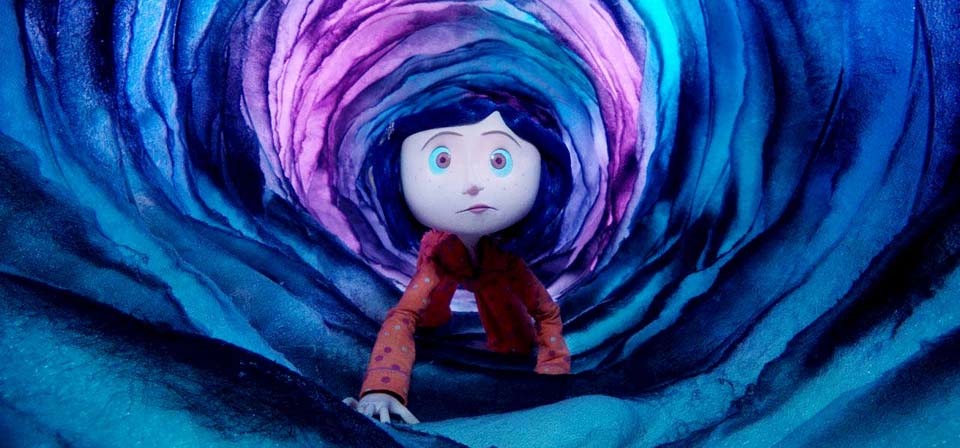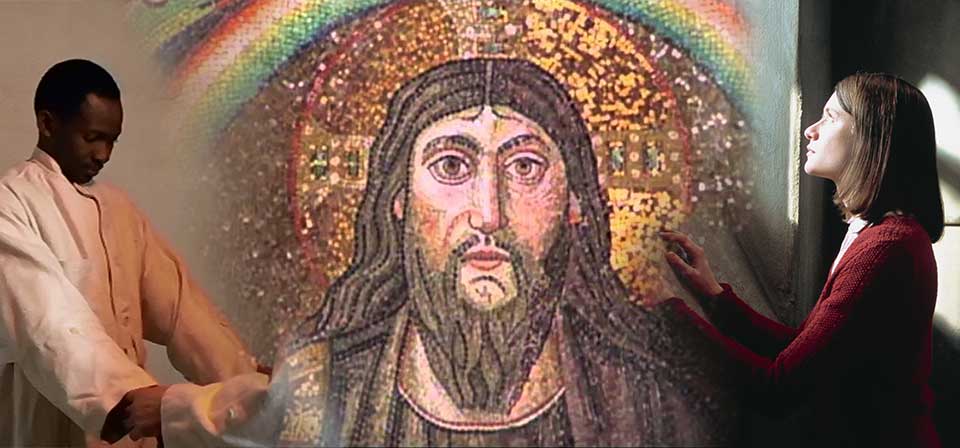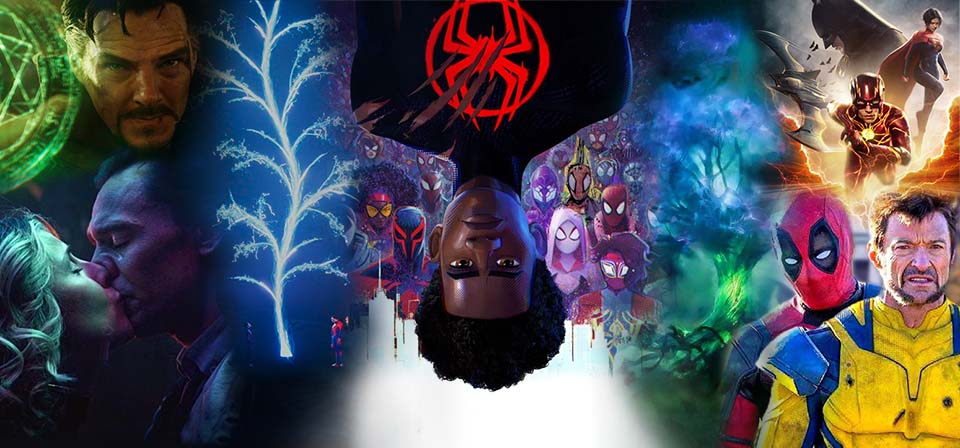Search Results
106 records found
Constantine (2005)
The comic-book Constantine is a blond Brit based in Liverpool (think Sting by way of Christopher Lee in Terence Fisher’s The Devil Rides Out). For the film, the casting of Keanu led to a change of setting to California and LA. Similarly, the casting of Shia LaBeouf (Holes) as Constantine’s ally Chandler turned the character from a seasoned comrade in arms into a Jimmy Olsen-like junior sidekick. (Whatever happened to casting actors who fit the part?)
Constantine’s Sword: James Carroll’s flawed history comes to the screen (2007)
The most serious problem with Constantine’s Sword, though, is not its historical distortions. The most serious problem is its out-and-out attack on Christianity as such. It is not merely antisemitism that troubles Carroll. It is not even only Jesus’ death and resurrection. Ultimately, it is the very belief that in Jesus God did something both unique and definitive, something with universal applicability for all mankind.
Contagion [video]
Contagion may not be everyone’s ideal date movie, but I’m married to an RN who prefers a good medical thriller to a trite chick flick. Suz was impressed with the technical realism of Contagion. I was impressed too. Here’s my 30-second take.

Coraline (2009)
With its dark tale of changeling parents and imprisoned souls, Coraline comes closer to the spirit of the traditional European fairy tale than perhaps any other film, animated or otherwise, in recent memory.

Coronavirus Quarantine Streaming Options for Lent and Easter (and More)
In the last few weeks, articles about movies to stream while sheltering in place during your coronavirus quarantine have proliferated across the internet almost as fast as the virus has spread around the world. What makes this article different?
Corpse Bride (2005)
As imagined by Tim Burton in stunning, wildly stylized stop-motion animation overtly reminiscent of The Nightmare Before Christmas yet technically far beyond it, this macabre fairy tale becomes, variously, a poignant meditation on the daunting weightiness of the vows of marriage, a raucous danse macabre in jumping jazz rhythms and florid colors, a visually rich celebration of Edward Gorey Gothic-Victorian and Charles Addams grotesque, and, perhaps most surprisingly, a touching portrait of tragedy, doomed love, empathy, and sacrifice.
The Count of Monte Cristo (2002)
Like The Mask of Zorro, Monte Cristo balances its anachronistic sensibilities and over-the-top set pieces with genuine emotion and a real moral dimension — even, in Monte Cristo, a spiritual dimension. This is an action movie that’s also a morality play, a tale of injustice and vengeance that actually reckons on God, faith, and divine justice.
Courageous (2011)
Coming on the heels of Fireproof, Courageous is the fourth film from Sherwood Pictures, and it’s another step forward for the church-based film company … While the film’s church-based roots and the tendency toward didactic, schematic storytelling are still in evidence, Courageous is their most ambitious and watchable film to date.

The Court Jester (1956)
Not only does it terrifically succeed where movies like Mel Brooks’ Robin Hood: Men in Tights miserably fail, The Court Jester also as merry, high-spirited, and wholesome as the adventures it parodies, with none of the cynical, anarchic spirit (or content issues) of the likes of Monty Python and the Holy Grail.
Cowboys & Aliens (2011)
Putting Daniel Craig and Harrison Ford in Stetsons is clearly an excellent idea. Both men have faces made for Westerns, rugged and rough-hewn. There is a sense of stoic reserve and working-class grit about them; neither is the sort of man one can only imagine being an actor, or leading a life of privilege.
Crash (2005)
Crash is a provocation, an insistent manifesto that filters every scene and almost every line of dialogue through the prism of race, but keeps turning the prism around and around until the colors no longer matter and we see only what the characters do.
Crazy Heart (2009)
Crazy Heart’s turning point becomes a moment of clarity not only for Bad, but for Jean as well. It’s a film that is more hopeful and redemptive than its characters have a right to be, but along with hope is awareness of potentially irrevocable consequences.
Crazy Heart in 3D?
Roger Ebert, a long-time opponent of 3D and a skeptic of most 3D movies, has an essay in Newsweek explaining why. His opening salvo is typical both of his views on the subject and of his lucid, vigorous writing style.
Crazy, Stupid, Love (2011)
In spite of these problems, I’m more struck by the movie’s generosity and empathy toward all its characters, and by its frank, countercultural clarity that acts such as adultery, divorce, casual sex and promiscuity — however understandable they may sometimes be, and however seemingly rewarding they may feel at the time — not only don’t lead to lasting happiness, not only are obstacles to true happiness, but ultimately bring a great deal of unhappiness, not only for oneself and one’s loved ones, but also to other people as well that another movie might not consider at all.
Creation (2009)
Where is the other side of the debate? Where is the Darwin who declared it “absurd to doubt that a man might be an ardent theist and an evolutionist”? Where are the likes of Charles Kingsley and Asa Gray — representatives of, respectively, religion and science, who saw no quarrel between their two worlds, and both of whom Darwin cited in this connection? Where, indeed, is the Reverend Innes who vouched that his friend Darwin “follows his own course as a Naturalist and leaves Moses to take care of himself”?

Crisis of Meaning on Infinite Earths, part 1: The multiverse and superhero movies
Is it possible to tell meaningful stories in a multiverse premise? Or does the multiverse idea tend toward nihilism?

Crisis of meaning, part 2: The lie at the end of the MCU multiverse
Sometimes it seems like the universe is sending you a message. In the MCU, the calls are coming from inside the house.

Crisis of meaning, part 3: What lies beyond the Spider-Verse?
A question worth asking of a story, then, is: “Is there room for God in this story, in this world?”
The Croods [video]
Dad, you’re a Neanderthal. No, really.
The Cross and the Vampire: Religious Themes in Terence Fisher’s Hammer Horrors
The religious themes in the B-movie horror films directed by Terence Fisher for Hammer Films could fill a book. In fact, there is such a book.
Recent
- Benoit Blanc goes to church: Mysteries and faith in Wake Up Dead Man
- Are there too many Jesus movies?
- Antidote to the digital revolution: Carlo Acutis: Roadmap to Reality
- “Not I, But God”: Interview with Carlo Acutis: Roadmap to Reality director Tim Moriarty
- Gunn’s Superman is silly and sincere, and that’s good. It could be smarter.
Home Video
Copyright © 2000– Steven D. Greydanus. All rights reserved.